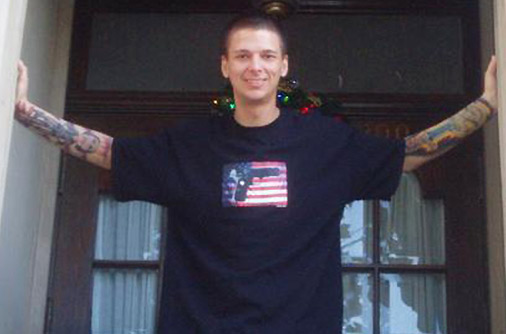When I walked in to the Chicago Tattoo Factory on my birthday last fall, it was not on a whim. I'd been contemplating getting a tattoo for about 20 years.
Still, I told no one I was going -- not my husband, not my best friends. My first and only trip to the tattoo parlor was a solo journey, one steeped with personal meaning and spiritual import.
A round Celtic knot about two inches in diameter now adorns the back of my neck in sepia-colored ink. To me, it symbolizes many things. A relationship with God. A connection to my beloved. A journey of faith and grace.
I know many people with tattoos -- many of them small and discreet, and some of them big and striking. To a person each acquired their body art after some self-conscious contemplation.
In the days following the shootings at Northern Illinois University, as a profile of the killer, Steven Kazmierczak, began to emerge, one detail of his otherwise unremarkable life caught my attention: his tattoos. Over the five or six months leading up to his rampage at NIU, the 27-year-old graduate student acquired several elaborate tattoos of violent, bloody images on his arms.

From oddculture.com
On his left forearm: a multicolored tattoo of a sword or dagger impaling a skull.
On his left arm, below the shoulder: a large, red pentagram with two points facing up (a symbol commonly used to indicate Satan or Satanism.)
And on his right forearm, a detailed depiction of Billy, the macabre puppet from the Saw horror films, riding a tricycle against a background of bleeding knife wounds that ran the width of his arm.
What, if anything, might Kazmierczak's tattoos have indicated about his state of mind, if not his soul?
In the Saw films, the puppet Billy delivers messages from the psycho protagonist known as the Jigsaw Killer, who doesn't actually kill his victims. Instead, Jigsaw puts them in sadistic traps where they have to choose between, for instance, maiming themselves horrifically or killing another person in order to survive.
Creepy.
Tattoos have been around since at least the Neolithic era, some 10,000 years ago. And the reasons people get the tattoos they do are myriad. As a rite of passage. Out of religious devotion. To mark a lost love. In memoriam. As an act of rebellion. Because it's pretty. Because their parents would be horrified. To ward off bad luck. To show solidarity with an organization, ethos or idea.
"The people I interviewed said, in their view, the images on their bodies were expressions of their spirituality," said Maureen Trudelle Schwarz, a professor of anthropology at Syracuse University who studied people in central New York who had Native American images tattooed on their bodies. "Some people said it was their soul becoming externalized."
I spoke to Jason Dunavan, the Champaign tattoo artist who created Kazmierczak's three new tattoos over three old, faded homemade tattoos, a process that took 15 hours over three visits. The artist said he couldn't make out what Kazmierczak's old tattoos were.
Dunavan has been a professional tattoo artist for five years and has worked in tattoo parlors since the early 1990s. He said he never asks people why they're getting inked or what the images they choose mean to them, and he didn't ask Kazmierczak about his. The only tattoo requests Dunavan turns down are for gang signs.
"This past Saturday, I did a half-sleeve of the Virgin Mary," he said. "I have no idea why that guy got it."
Kazmierczak mentioned that he wanted the Billy tattoo because he liked horror films, Dunavan recalled. It was meant to be the beginning of a series of horror-film-themed body art the NIU shooter planned to acquire. "He wanted Freddy Krueger and a couple of other characters, too," Dunavan said.
He remembers Kazmierczak as "a really, really laid-back, timid guy." In the 15 hours they spent together, nothing Kazmierczak said or did gave Dunavan any indication of the darkness that apparently lurked beneath his demure demeanor.
Earlier this week, Dunavan was giving away free tattoos -- of red and black ribbons -- in exchange for donations he intended to give to the NIU victims fund.
In the late 1990s, Christina Frederick-Recascino, a professor of human factor psychology and vice president for research at Embry-Riddle Aeronautical University in Florida, conducted a study of adults age 18 to 30 who had been tattooed. While she found no connection between tattoos and psychopathology, body art does say something about the person who bears it.
"The reason they got the tattoo and chose the actual art that what they got represented something about their identity and how they viewed themselves," she said.
Kazmierczak's tattoos could have been a red flag. "It could certainly reflect a pathological identity coming out," she said. "If, all of a sudden, I saw someone who didn't do this before, whose identity was something that I found to be positive, and all of a sudden they're getting violent imagery tattooed on their body, I would probably wonder what's going on . . . and just start asking some questions."
Tragically, there's only one question any of us now can ask:
Why?